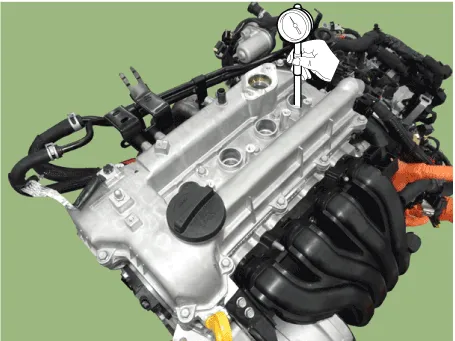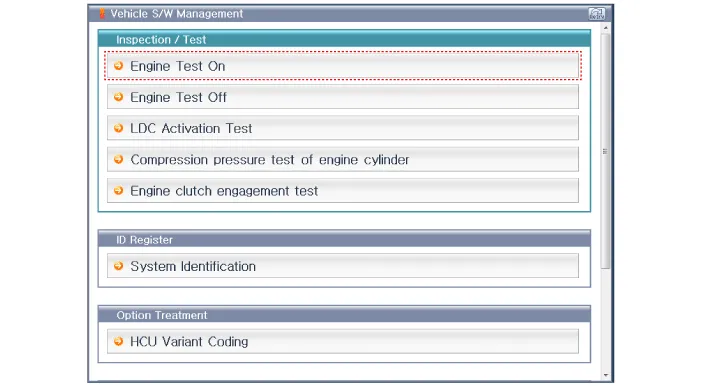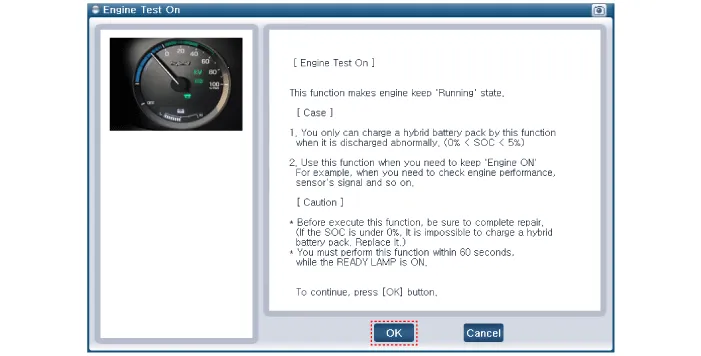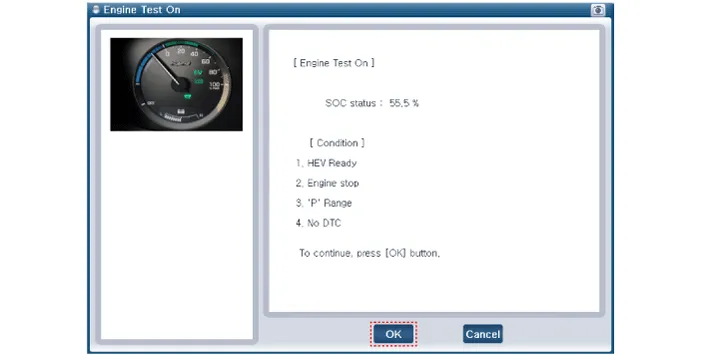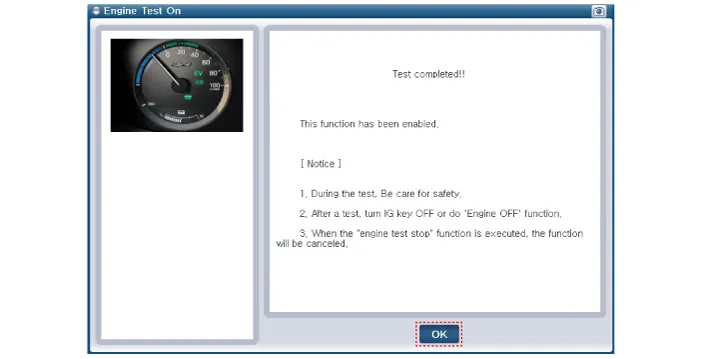Hyundai Ioniq (AE): Engine Mechanical System / Repair procedures
Hyundai Ioniq (AE) 2017-2022 Service & Repair Manual / Engine Mechanical System / Repair procedures
| Compression Pressure Inspection |
|
| 1. | Warm up and stop engine. Allow the engine to warm up to normal operating temperature. |
| 2. | Remove the air cleaner assembly. (Refer to Intake and Exhaust System - "Air Cleaner") |
| 3. | Remove the ignition coils. (Refer to Engine Electrical System -"Ignition Coil") |
| 4. | Remove the spark plugs. (Refer to Engine Electrical System -"Spark Plug") |
| 5. | Check the cylinder compression pressure.
|
| 6. | Reinstall the spark plugs.
|
| 7. | Install the ignition coil.
|
| 8. | Connect the ignition coil connectors and injector connectors. |
| 9. | Some DTC's may exist after the inspection test and may need to be manually cleard with GDS. |
Specifications Description Specification Limit General TypeIn-line, DOHC Number of cylinders4 Bore72.
Troubleshooting Symptom Suspect area Remedy Engine misfire with abnormal internal lower engine noises.
Other information:
Hyundai Ioniq (AE) 2017-2022 Service & Repair Manual: Auto Defoging Actuator. Description and operation
DescriptionThe auto defogging sensor is installed on front window glass. The sensor judges and sends signal if moisture occurs to blow out wind for defogging. The air conditioner control module receives a signal from the sensor and restrains moisture and eliminates defog by the intake actuator, A/C, auto defogging actuator, blower motor rpm and mod
Hyundai Ioniq (AE) 2017-2022 Service & Repair Manual: Smart Cruise Control (SCC) Switch. Components and components location
C
Categories
- Manuals Home
- Hyundai Ioniq Owners Manual
- Hyundai Ioniq Service Manual
- Brake Fluid
- How to Connect Portable Charger (ICCB: In-Cable Control Box)
- Hybrid Control System
- New on site
- Most important about car
Copyright © 2025 www.hioniqae.com - 0.0151


